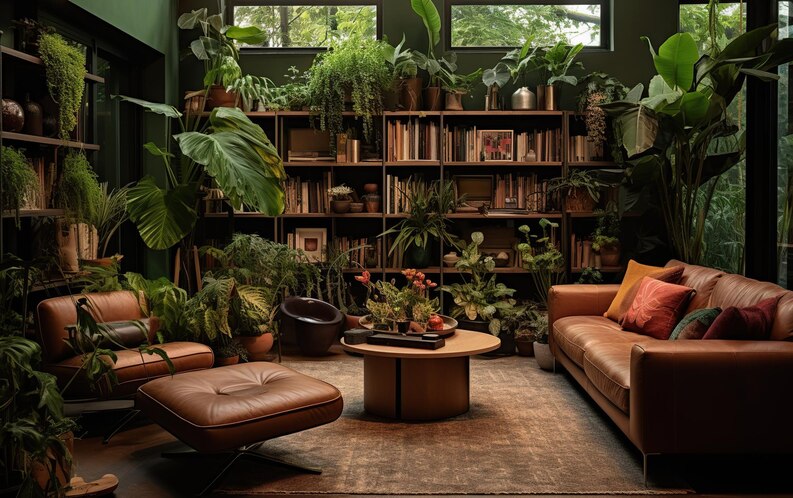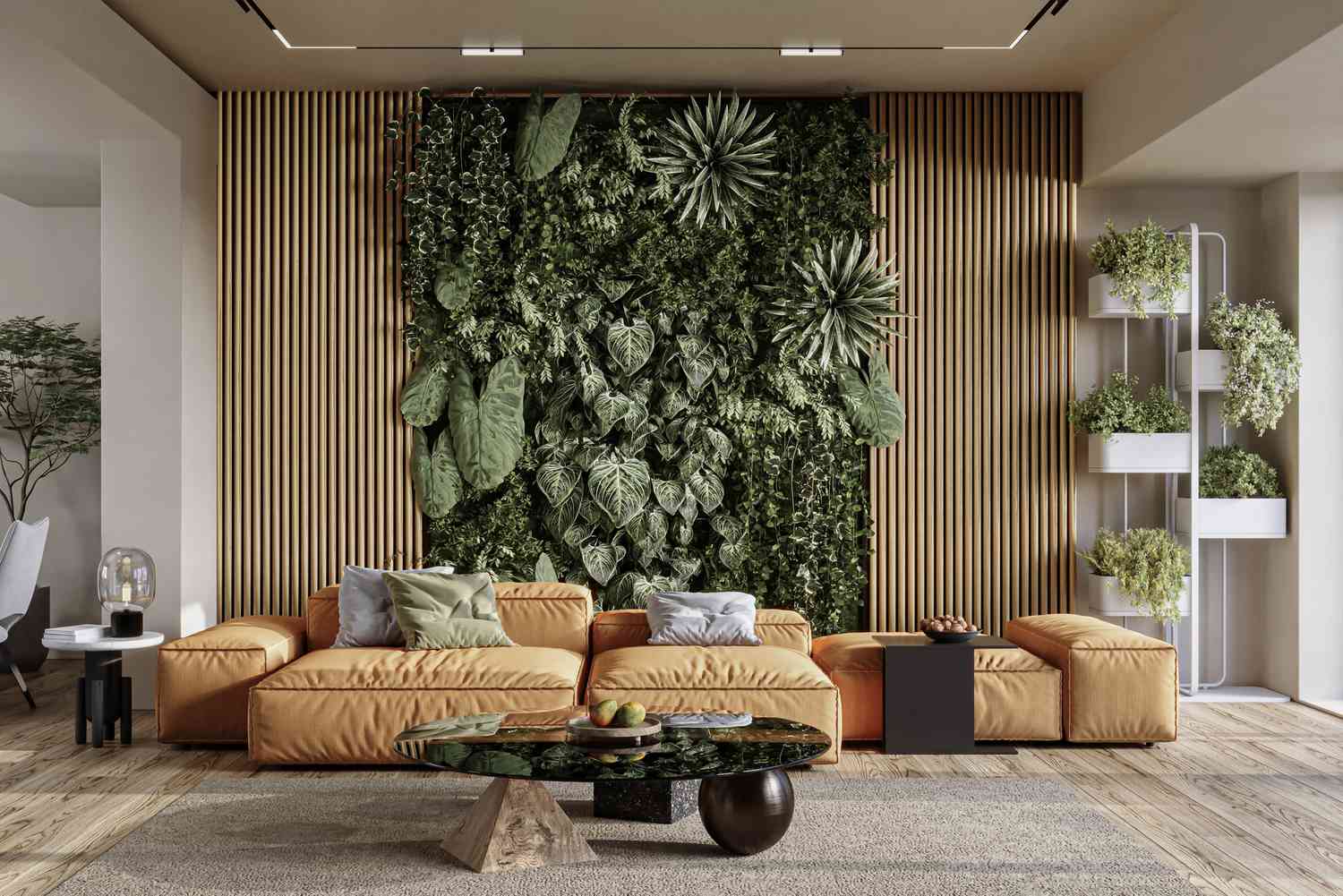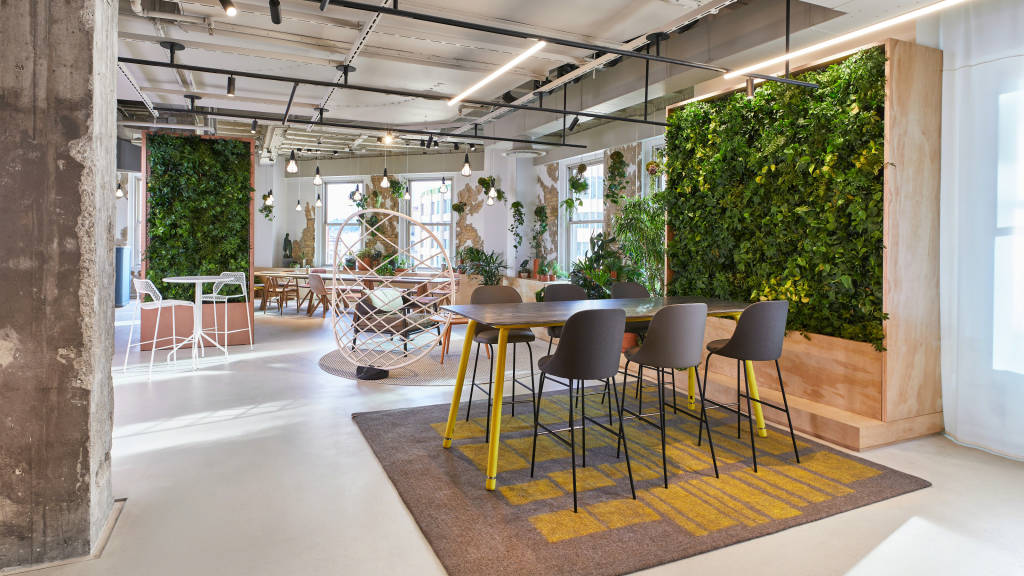
Biophilic Design: Bringing Nature Indoors for Healthier Living
Discover how biophilic design nurtures well-being and productivity indoors.Imagine stepping into a space where sunlight dances through leafy canopies, the gentle trickle of water soothes your senses, and the air feels fresh and invigorating. No, you haven't wandered into an enchanted forest – you've just entered a beautifully designed biophilic space. As an interior designer with a passion for environmental psychology, I've seen firsthand how incorporating nature into our built environments can have a profound impact on our well-being and productivity. Welcome to the world of biophilic design, where the great outdoors comes indoors to transform our lives.
What is Biophilic Design?
At its core, biophilic design is an approach that seeks to connect people with nature in the built environment. It's based on the biophilia hypothesis, which suggests that humans have an innate affinity for nature and other living things. This concept isn't just a fleeting trend – it's deeply rooted in our evolutionary history. After all, we spent most of our existence as a species in natural environments, not concrete jungles.
Biophilic design taps into this primal connection, bringing elements of nature into our homes, workplaces, and public spaces. It's about creating environments that nurture our inherent bond with the natural world, even when we're indoors.

The Science Behind Biophilic Design
You might be thinking, "Sure, nature is nice, but does it really make a difference?" The answer is a resounding yes! Numerous studies have shown that exposure to nature and natural elements can significantly impact our mental health and cognitive function.
Research has found that people in biophilic environments experience reduced stress levels, improved mood, and enhanced creativity[1]. In one study, office workers with views of nature reported 23% fewer headaches and 15% higher levels of wellbeing compared to those without natural views[2].
In my own practice, I've seen clients transform from stressed and scattered to focused and energized after implementing biophilic design principles in their workspaces. It's like watching a wilted plant perk up after a good watering – the change can be that dramatic!
Key Elements of Biophilic Design
So, how do we bring the outdoors in? Here are some key elements of biophilic design:
- Natural light and views: Maximizing daylight and providing views of nature can help regulate our circadian rhythms and boost mood.
- Indoor plants and living walls: These not only look beautiful but also improve air quality and provide a direct connection to nature.
- Natural materials: Incorporating wood, stone, and other natural materials adds warmth and texture to spaces.
- Water features: The sight and sound of water can have a calming effect on our nervous system.
- Natural shapes and forms: Organic shapes and patterns inspired by nature can create a sense of harmony in a space.

Benefits of Biophilic Design
The benefits of biophilic design extend far beyond aesthetics. Here's what you can expect:
- Stress reduction and improved mood: Nature has a way of calming our nerves and lifting our spirits.
- Enhanced creativity and productivity: A study found that employees in offices with natural elements were 15% more productive[3].
- Better air quality and physical health: Plants act as natural air purifiers, removing toxins from the air.
- Increased connection to the environment: Biophilic design can foster a greater appreciation for nature and environmental stewardship.
Incorporating Biophilic Design at Home
You don't need to build a rainforest in your living room to reap the benefits of biophilic design. Start small with these easy tips:
- Add some houseplants: Even a few potted plants can make a difference.
- Use nature-inspired art: Photographs or paintings of natural scenes can create a connection to nature.
- Maximize natural light: Rearrange furniture to take advantage of windows and consider adding skylights if possible.
For those ready to take it further, consider installing a green wall or redesigning spaces to blur the lines between indoors and outdoors.
Biophilic Design in the Workplace
Companies are catching on to the benefits of biophilic design. Amazon's Spheres in Seattle are a prime example – these giant glass domes house over 40,000 plants from around the world, creating a lush workspace for employees[4].
In my experience consulting with businesses, I've seen how biophilic offices can boost employee satisfaction and productivity. One client saw a 20% decrease in sick days after implementing biophilic design principles!
Biophilic Design in Public Spaces
Biophilic design isn't just for homes and offices. Hospitals are incorporating healing gardens to speed patient recovery. Schools are creating nature-based play areas to enhance learning. Even urban planners are using biophilic principles to create more livable cities.
Singapore's Changi Airport, with its indoor waterfall and forest valley, is a stunning example of how biophilic design can transform public spaces[5]. It's like stepping into a tropical oasis – who knew airports could be so refreshing?
Challenges and Considerations
While the benefits are clear, implementing biophilic design does come with challenges. Maintenance of natural elements, balancing biophilic design with other needs, and cost considerations are all factors to keep in mind. However, with careful planning and creativity, these challenges can be overcome.
The Future of Biophilic Design
As we look to the future, biophilic design is set to evolve in exciting ways. Biophilic tech, which mimics natural processes, and vertical forests in urban areas are just a few trends on the horizon. I predict we'll see a shift towards spaces that not only incorporate nature but actively contribute to local ecosystems.
Conclusion
Biophilic design is more than just a trend – it's a return to our roots, a way of creating spaces that nurture our innate connection to nature. Whether it's a small potted plant on your desk or a full-scale green wall in your office, every step towards bringing nature indoors is a step towards a healthier, happier, and more productive life.
So, why not start your biophilic journey today? Take a moment to observe how you feel in natural versus artificial environments. You might be surprised at the difference. Remember, as the great architect Frank Lloyd Wright once said, "Study nature, love nature, stay close to nature. It will never fail you." In my experience, truer words were never spoken.
References
- https://www.science.org/doi/10.1126/sciadv.aax0903
- https://en.wikipedia.org/wiki/Biophilic_design
- https://blog.naturahq.com/9-inspiring-examples-of-biophilic-design
- https://www.emerald.com/insight/content/doi/10.1108/ARCH-10-2023-0288/full/html
- https://moss.amsterdam/2021/10/07/transforming-a-conventional-workspace-with-biophilic-principles/
- https://www.toulmincabinetry.com/blog/biophilic-design-celebrating-nature-in-your-decor-and-design
- https://www.red-thread.com/blog/biophilic-design-in-the-workplace/
- https://thermory.com/blog-and-news/the-six-elements-of-biophilic-design/
- https://biofilico.com/news/5-best-examples-sustainable-office-interior-biophilic-design
- https://www.terrapinbrightgreen.com/report/biophilic-design-case-studies/
- https://www.linkedin.com/pulse/15-biophilic-design-case-studies-embracing-natures-patterns-abbas
- https://www.spacerefinery.com/blog/biophilic-design-101
- https://biophilicflair.com/real-world-case-studies-biophilic-design-success-stories/
The Future of Home Heating and Cooling: Innovations in HVAC Technology






Comments
I never realized how much of an impact nature-inspired decor could have until I tried it. It’s both visually appealing and beneficial for well-being.
Biophilic design seems like a great way to create a healthier indoor environment, especially in urban areas where access to nature is limited. It’s a trend worth exploring further.
I’ve started adding more natural light and greenery to my living space, and it really makes a difference in my mood. Biophilic design should be a priority for everyone!
The idea of incorporating nature into indoor spaces is truly appealing. I wonder if it could be a cost-effective solution for improving mental health in workplaces.
Biophilic design has made a huge difference in my home! Adding more plants and natural elements really brings a sense of calm and improves the indoor atmosphere.
Leave a Comment